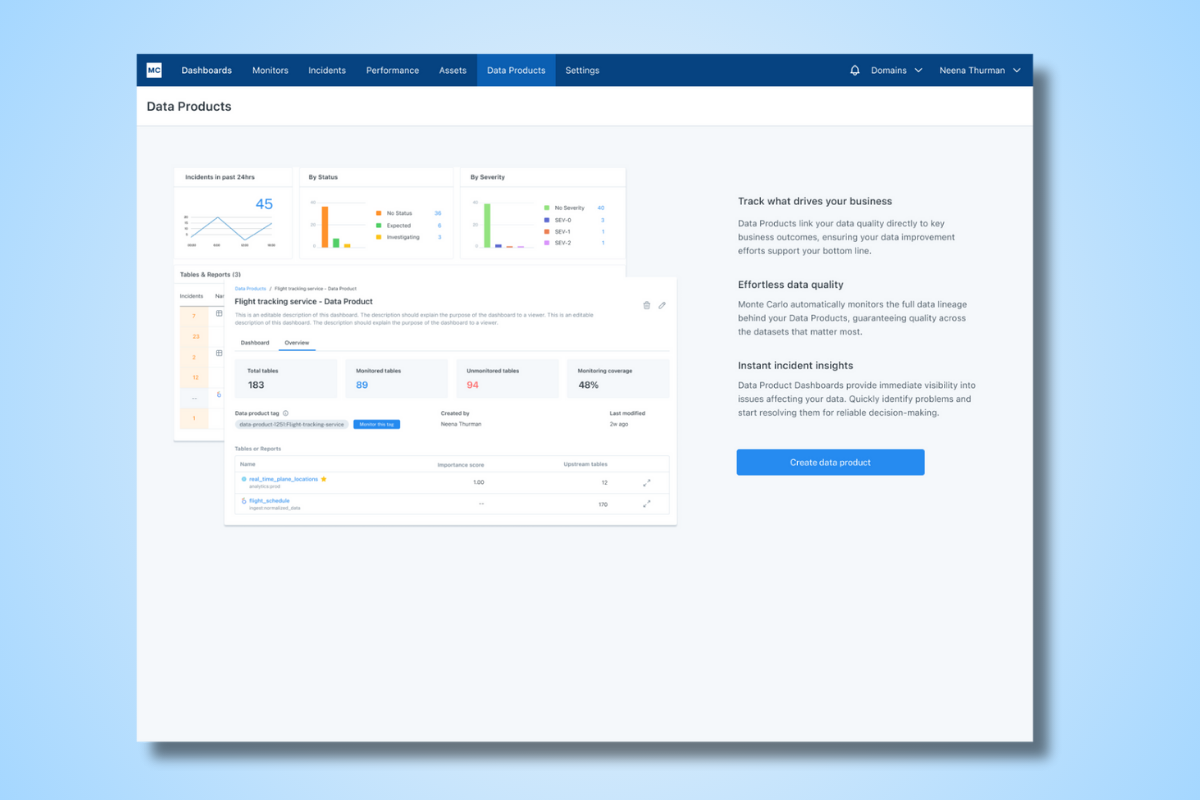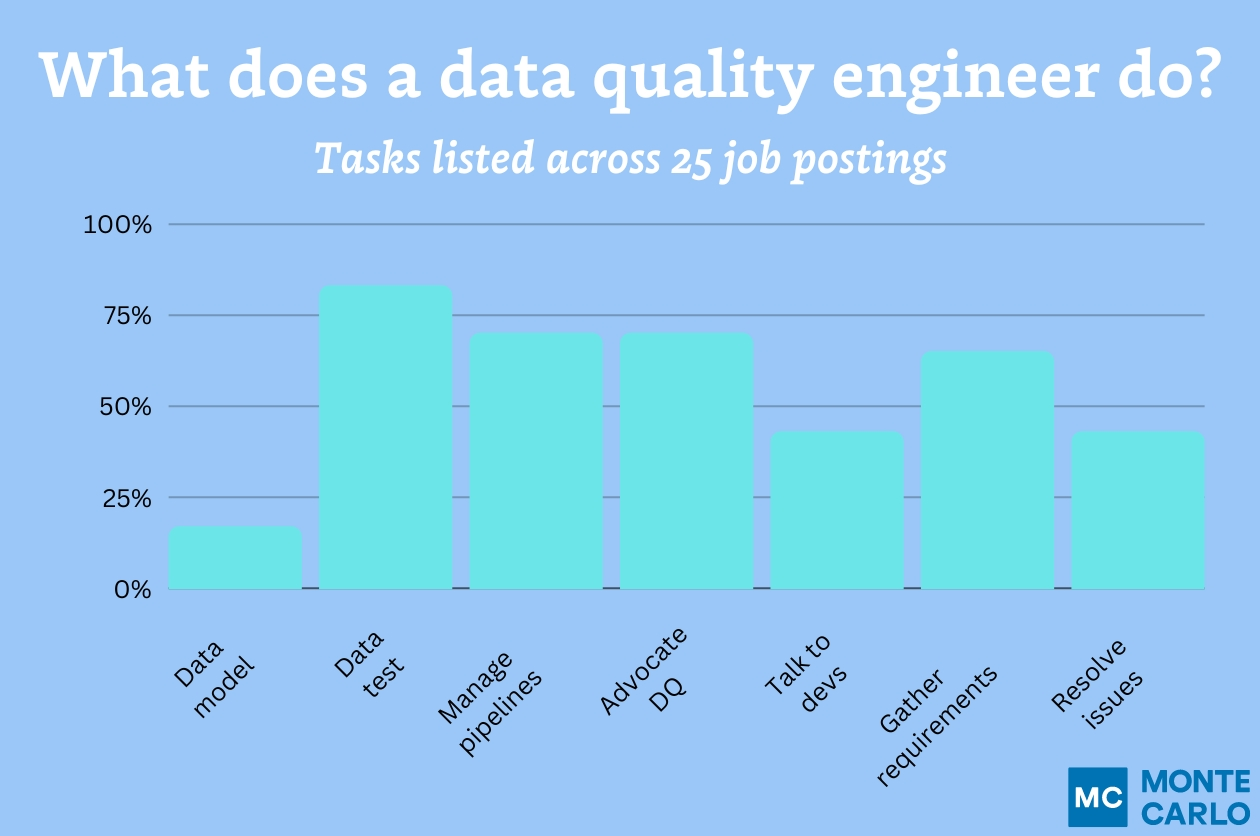Snowflake Summit 2022: For Customers, Less Than 25 Percent of Data Actually Lives on the Cloud

We surveyed over 200 data leaders on the show floor at Snowflake Summit 2022 about their experiences driving data adoption in the cloud. Hint: while progress has been made to migrate data to Snowflake, gaps remain when it comes to quality, documentation, and democratization.
Over the past several years, Snowflake has taken the data engineering world by storm, with a rapidly growing list of new product features, a dizzying ecosystem of technology partners, and, most importantly, an impressive collection of customers like Capital One, JetBlue, and Roche.
In fact, companies invested over $1.2 billion in Snowflake workloads last year; other cloud warehousing technologies, like Databricks and Google BigQuery, reported similarly monumental 2021 financials, pulling in $800 million and $1.5 billion in revenue respectively.
While flashy case studies, tight marketing campaigns, and increased spending paint a rosy picture of life on the “Data Cloud” or “Data Cloud Platform” – whatever they’re calling it these days, what do data leaders actually think about Snowflake? And what are the biggest opportunities and challenges for teams migrating to the cloud?
At Snowflake Summit 2022, Monte Carlo, a Snowflake data observability partner, surveyed over 200 senior data leaders, with titles including Chief Data Officer (CDOs,), VPs, Directors, and Chief Architects, about their data cloud warehouse investments. Respondents varied across industries, from FinTech and retail to media and healthcare, and represented some of Snowflake’s most avid customers.
Nearly half had 25 percent or less of their data on the cloud, signally that digital transformation – and end-to-end migration – is still very a work in progress. Encouragingly, over 20 percent of respondents had at least half of their company’s data in Snowflake or the cloud more broadly.
Not surprisingly, 73 percent intended to invest in a data warehouse or lake this year, while 58 percent were actively looking into purchasing transformation and modeling tools, 48 percent were in the process of buying a data catalog, and just under 43 percent were investing in a data quality or observability solution.
This interest in “productizing” data was echoed by what were cited as the biggest technical hurdles for broader Snowflake adoption: data quality and trust (35 percent) followed by a lack of documentation and data context (20 percent). On the organizational level, the biggest road block for success was data democratization, in other words, the process of empowering everyone across the organization to leverage data to drive positive outcomes. Data governance, hiring and recruiting, and budget constraints also rose to the top of the list when it came to key organizational challenges.
The resounding majority of data leaders surveyed reported that they use Snowflake to power the data in their internal executive dashboards and analytics, with data science and machine learning following in close second. Only 45 percent of respondents reported that they build data applications and products on top of Snowflake. Still, these results suggest that Snowflake is powering more and more use cases across the business beyond decision making.
Still, an increase in Snowflake adoption across data organizations seems imminent; the most popular feature (among a group of eight defining functionalities), was Autoscaling (36 percent), suggesting that workloads on Snowflake have increased over time. The second most popular feature? Time Travel, which allows teams to access historical data within a defined time period, was rated the second most useful feature.
These results, and others in our new report, highlight the continued growth of the pioneering company and the innovations they’ve built to help teams optimize their journeys to the modern (or at least, the more modern) data stack.
Pioneering the Future of Data in the Cloud
For many Snowflake customers – today’s most pioneering data leaders – the writing is on the wall: cloud adoption continues to be a challenge, particularly when data trust and democratization is low. This year’s Summit introduced several exciting new features – greater support for Python, operational data, and data monetization, oh my! – dedicated to tackling many of these challenges, and gave ecosystem partners an opportunity to showcase how they intend to fill in the gaps.
Most importantly, these findings signal a stronger desire to operationalize – dare we say, productionalize – data at scale by migrating to cloud architectures, as echoed in the rise of trends like the data mesh and data lineage.
Personally, I think the amount of data on Snowflake – and other cloud warehouse, lake, and of course, lakehouse (or, Unistore) – providers will only grow, warranting a fresh lens on the tools and techniques teams need to adopt to be successful.
And no, the winner isn’t the person with the best conference swag or most inspirational keynote. Only time (and real customer adoption, of course), will tell.
Check out our full survey results, below:
Huge shout out to Jacq Riseling, Alysa Barth, Cassie Quan, Michael Segner, Conor Morley, Jon So, and Terry Lucy for helping with this survey!
 Product demo.
Product demo.  What is data observability?
What is data observability?  What is a data mesh--and how not to mesh it up
What is a data mesh--and how not to mesh it up  The ULTIMATE Guide To Data Lineage
The ULTIMATE Guide To Data Lineage 





